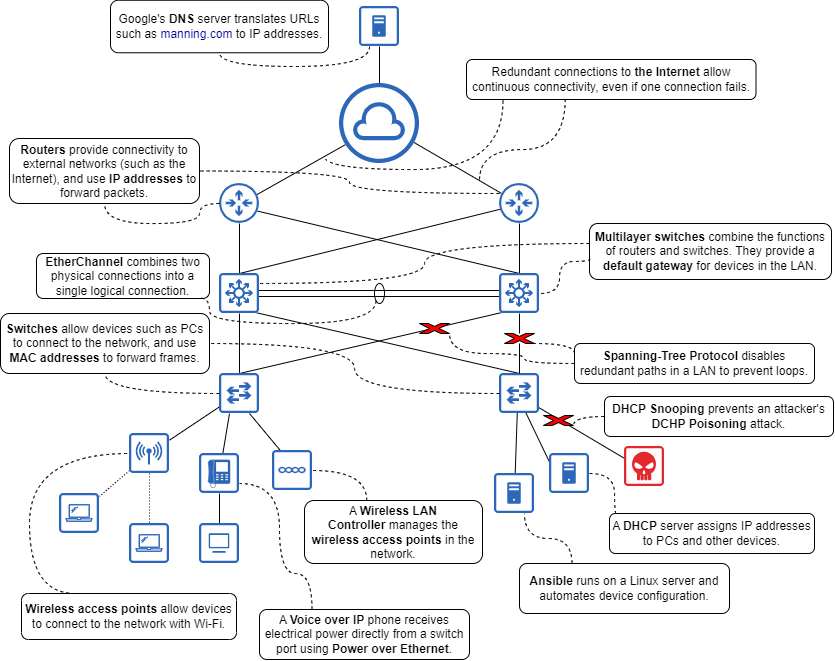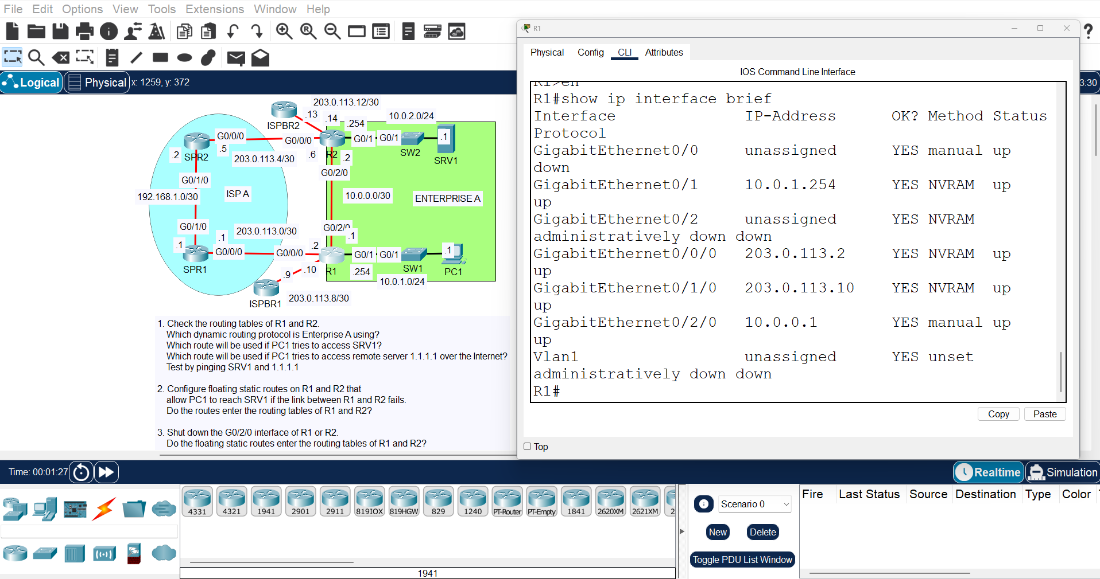1 Introduction to the CCNA
This chapter introduces the CCNA as Cisco’s entry-level networking certification and sets expectations for what the exam covers and how it feels to take it. It explains that CCNA spans six major domains and is “a mile wide and an inch deep”: broad in scope but focused on core, real-world fundamentals used across vendors. You get a concise tour of the exam experience—120 minutes, a mix of multiple-choice, drag-and-drop, and hands-on lab simulations—with questions drawn from a large pool, no backtracking once you move on, and strong emphasis on time management. Practical details such as scheduling through Pearson VUE, choosing test center or online proctoring, and Cisco’s NDA round out the exam overview.
The chapter makes the case for why the CCNA remains the industry’s de facto entry-level networking credential. Cisco’s dominant footprint means employers actively seek CCNA-ready talent, and the certification helps candidates clear HR screens and compete for roles like network technician, support engineer, systems/network administrator, and junior network engineer. Beyond networking, the CCNA’s grounding in protocols and connectivity translates to adjacent IT paths—cybersecurity, cloud, and systems engineering—making it a smart investment for newcomers and upskillers alike who want to stand out in a crowded job market.
For preparation, the chapter advocates a multi-resource strategy that combines a structured book, a complementary video course, and lots of labbing. It stresses active learning (note-taking, explaining concepts in your own words) and hands-on practice as nonnegotiable, highlighting Packet Tracer as a free, lightweight simulator well suited to CCNA labs, while noting the cost and hardware demands of alternatives like physical gear or emulation platforms. You’re given two viable study workflows—book-first then video, or in parallel—with a repeated warning not to skip labs, since skills are tested in simulations and practice cements understanding. The book’s own structure weaves fundamentals, connectivity, and access early, then builds through services, security, and automation, and it recommends studying in order while using the appendix to cross-reference exam topics.
A Local Area Network (LAN) connected to the Internet (as represented by the cloud icon). Various devices (routers, switches, etc.) and protocols (DHCP, DNS, etc.) are highlighted. We will cover all of these technologies and more in this book.

A lab in Cisco Packet Tracer. On the left there is the network diagram with the lab’s instructions below it, and on the right there is the CLI of one of the devices in the network.

Summary
- The CCNA is an exam and certification by Cisco Systems. It is the de-facto industry standard entry-level networking certification.
- The CCNA exam topics are divided into six domains: network fundamentals, network access, IP connectivity, IP services, security fundamentals, and automation and programmability. Each domain contains various topics and sub-topics.
- The CCNA exam is 120 minutes in length, and consists of a variety of question types: multiple-choice single-answer, multiple-choice multiple-answer, drag-and-drop, and lab simulations.
- Exam questions are randomly drawn from a large pool. Question types, order, and distribution across the exam domains are random, so each test-taker will have a different experience.
- The CCNA exam is administered by Pearson VUE, and can be taken at an authorized test center or online.
- Enterprises of all sizes use Cisco devices and seek CCNA-certified engineers. The knowledge and skills gained in the CCNA apply to all areas of IT – not just networking.
- Study resources (including this book) do not teach the CCNA exam topics in order, from top to bottom. Rather, each instructor teaches the topics in the order they believe to be best. Use the appendix at the back of this book to cross-reference the CCNA exam topics if necessary.
- Multiple study resources (book, video, labs) should be used together to solidify what you learn.
- Labs can be done with physical hardware, an emulator (such as Cisco Modeling Labs), or a simulator (Cisco Packet Tracer).
- Cisco Packet Tracer is the best option for CCNA labs because it is free, easy to set up, and supports most of what is needed for the CCNA.
- Do your lab exercises!
FAQ
What is the CCNA?
The CCNA is Cisco’s entry-level networking certification and the name of the exam required to earn it. It validates knowledge across IP addressing, wired and wireless networking, routing and switching, network services, security fundamentals, and network automation/programming. Although vendor-specific, it emphasizes core, vendor-agnostic networking fundamentals alongside hands-on Cisco device skills.Which topics does the CCNA cover, and how are they weighted?
- 1.0 Network Fundamentals – 20%
- 2.0 Network Access – 20%
- 3.0 IP Connectivity – 25%
- 4.0 IP Services – 10%
- 5.0 Security Fundamentals – 15%
- 6.0 Automation and Programmability – 10%
 Acing the CCNA Exam, Volume 1 ebook for free
Acing the CCNA Exam, Volume 1 ebook for free